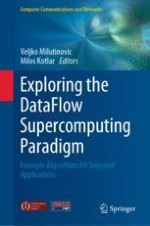2019 | OriginalPaper | Buchkapitel
6. Face Recognition Using Maxeler DataFlow
verfasst von : Tijana Sustersic, Aleksandra Vulovic, Nemanja Trifunovic, Ivan Milankovic, Nenad Filipovic
Erschienen in: Exploring the DataFlow Supercomputing Paradigm
Aktivieren Sie unsere intelligente Suche, um passende Fachinhalte oder Patente zu finden.
Wählen Sie Textabschnitte aus um mit Künstlicher Intelligenz passenden Patente zu finden. powered by
Markieren Sie Textabschnitte, um KI-gestützt weitere passende Inhalte zu finden. powered by
